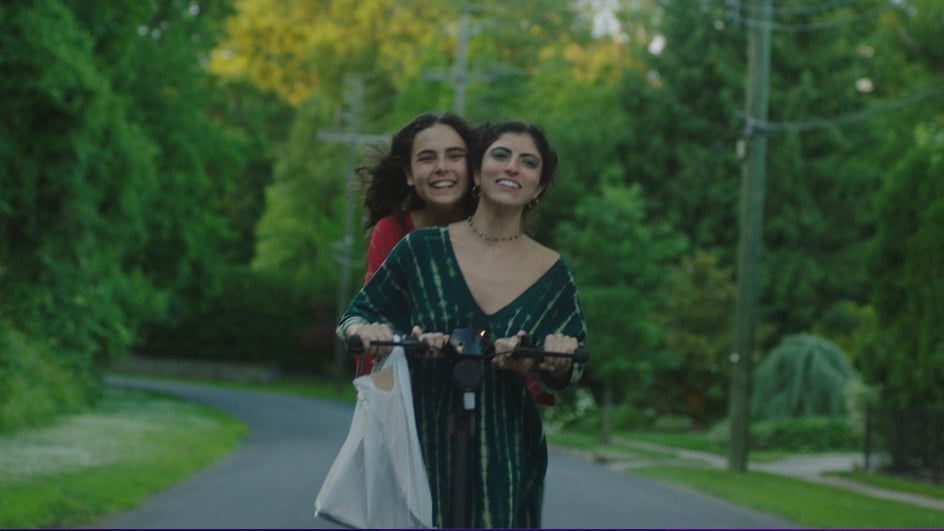
Mar 14, 2023
One of the best things about film festivals — whether they’re major international festivals like SXSW or Sundance or the regional film fest in your hometown — is that they allow for new voices to be heard and new visions to be shown.
For anyone on their own filmmaking journey trying to break into the industry and launch their own careers, watching these films and hearing from these up-and-coming filmmakers can be both great inspiration, as well as provide helpful advice for how they were able to pull off their shots and create their stories.
We sat down with writer and director Amy Omar to talk about her SXSW short film ‘Breaking Fast with a Coca-Cola’ which follows two Turkish American teenagers who decide to fast for Ramadan for the first time.
A coming-of-age comedy with tremendous heart and some great storytelling, we chat with Amy about how she was able to bring this story to life, and keep their camera dry in some of their more fun swimming pool setups.
Soundstripe: How did you get into filmmaking and writing/directing?
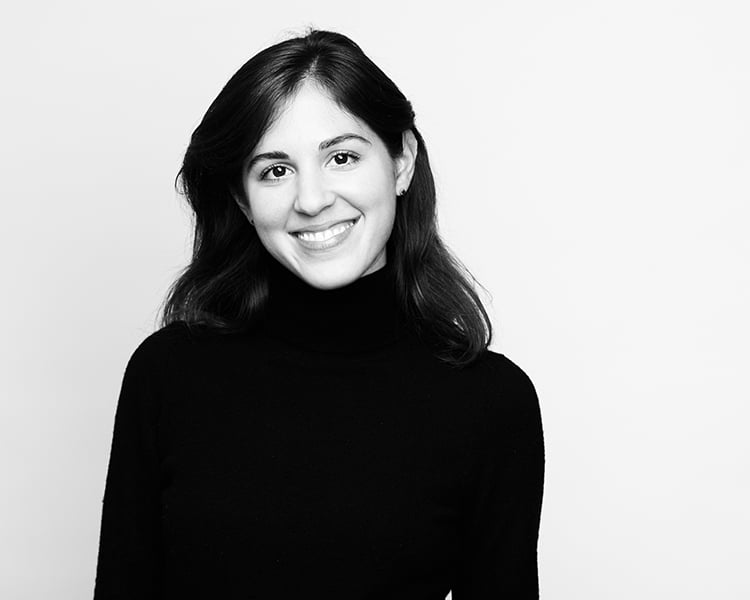
Amy Omar: I have had quite an unconventional entrance into the filmmaking world. My professional background is originally in entertainment law. I have worked in Business & Legal Affairs for a few years now and had the chance to work on some really exciting projects like Sean Baker's Red Rocket, Lena Dunham's Sharp Stick and Down Low, which is actually also premiering at SXSW this year. With respect to writing, I've been writing since high school and
I always knew I wanted to be a writer but never really allowed myself to pursue that path.
My parents are both Turkish - my mom is an immigrant and my dad is a first generation American - so there was always the expectation that I would pursue a more traditional, stable career - like law. Entertainment law seemed like a happy medium but my writing side always creeped up on me. When I was studying for the bar exam, I actually carved out time every night to write a T.V. pilot. I felt like I was going to go insane if I didn't flex my creative muscles somehow. Once I started working, I continued to work on that T.V. pilot but also expanded my writing to narrative essays. One of these essays was, "Breaking Fast with a Coca Cola" - the essay that I would later adapt into my short film.
I actually have a funny story of why I was inspired to adapt my essay. That summer of 2021, I was listening to Guy Raz’s “How I Built This” podcast and he was interviewing Ava Duvernay on her company, Array. She spoke about how she got into directing - she had a short film that she wanted to direct but never considered herself to be a filmmaker - she just wanted to share her story and the rest is history! I was so inspired by that interview I told myself that I needed to go out there and share my story and the most manageable way to do that would be to write a short film. Once I decided that, I wrote the script over a few days. It was actually quite seamless to write as it was influenced by my own story.
Once I shared it with one of my producers, Jordan Hart, she encouraged ME to direct it. I had never considered myself to be a director - I didn't go to film school (!) - but I agreed and it was the best decision. I ended up getting a film grant from Wavelength Productions and that projected my film into reality. After going through the directing process, I sincerely enjoyed every single part of the process - from casting to rehearsals to ad libbing on set to sound mixing. It's such a wonderful feeling to do something and realize that this is what you want to do for the rest of your life!
Soundstripe: Where did the initial idea for your film 'Breaking Fast with a Coca-Cola' first come to you?
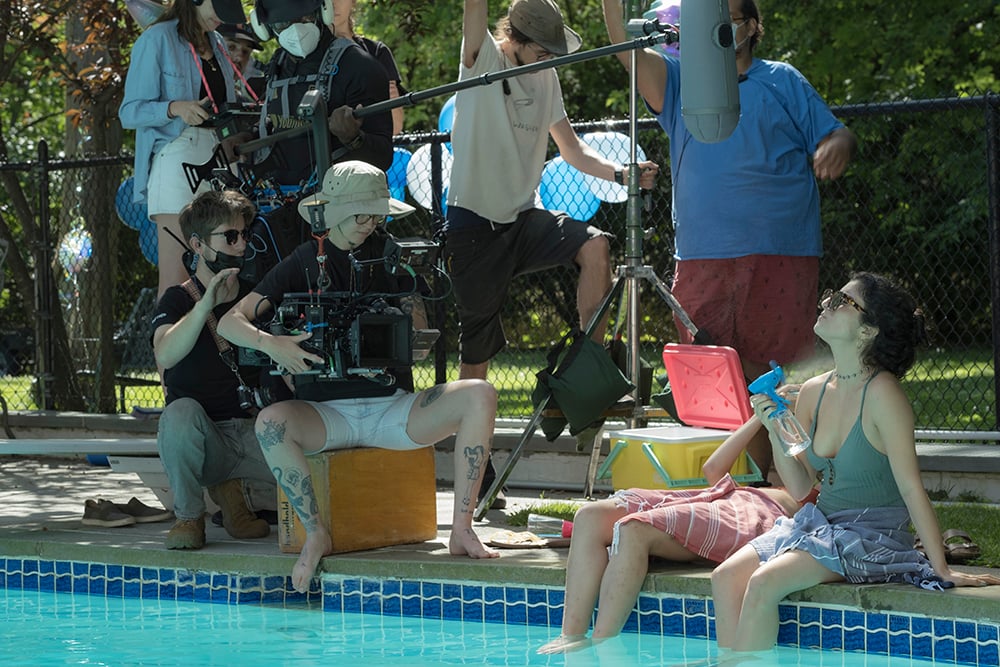
Image by Jonno Rattman.
Amy Omar: One summer fifteen years ago, my best friend and I decided to fast for Ramadan for the first time. In 2021, I woke up on the first day of Ramadan and fondly remembered the memory of that summer and reflected on its greater meaning. There was something really special and earnest about these two 16 year olds feeling so impassioned about their decision to fast that they not only did it all summer long but also hid it from their parents.
So I took to writing. I wrote an essay, "Breaking Fast with a Coca Cola" and ruminated on why that memory was so special. It is the layers of the story that add to the richness of the film. You have teens who are in a coming of age period in their development and are constantly asking themselves "WHY" and then you add family culture and religion to the mix. Need I say more?
This was the perfect essay to adapt into a film because of these layers of conflict. Every character is the way they are for a certain reason. Generational conflict is definitely a huge theme here and is a topic not typically addressed. The perspectives of a new immigrant vs. seasoned immigrant vs. first generation vs. second generation can be quite varied.
Because our immigrant parents feared persecution in America, my best friend and I grew up in secular Turkish households in the Midwest and knew nothing about what fasting entailed or the rules required of us. We only knew that we needed to abstain from eating from sunrise to sunset. That summer taught us the power of religion as a creator of community and was an exercise actively making a choice to incorporate a practice into our identity, rather than have it influenced by a parent.
Soundstripe: What makes this film important to you, and how were you able to bring it to life?
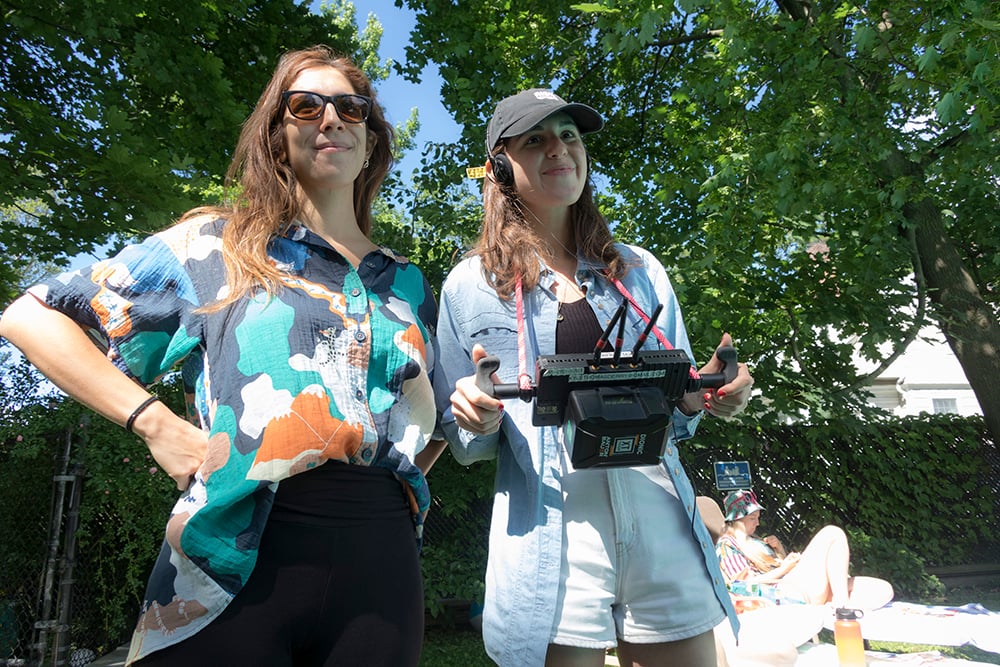
Image by Jonno Rattman.
Amy Omar: What I love about this story is that it flips the immigrant religious narrative on its head. Instead of children of immigrants rejecting the religion of their parents, they wholeheartedly embrace it and want to be a part of something important. I want audiences to consider this unique perspective and begin to expand their knowledge on the complexity of religious and cultural practices. Also - the Turkish narrative is missing from mainstream and even indie media. "Breaking Fast with a Coca Cola" gives viewers a peak into this rich world through the characters, production and costume design, food and our collaboration with the Anatolian rock band, Altın Gün.
We were able to bring it to life with my incredible team! My producers Jordan Hart (DEAR MAMA) and Karine Benzaria (CLAIRE, MARCY LEARNS SOMETHING NEW) were such badasses in supporting me every step of the way. From Jordan sending me so many grants to apply to (one of them being WAVE) to Karine calling every single pool in the Tri-State area, they worked tirelessly on this film. I also cannot stop raving about my all female HODs and (mostly female) BIPOC crew.
Since this is my directorial debut, I prefaced this with each team member, letting each of them know that I would need extra help in executing my vision. My heart is still so full of love for everyone who made this a reality and how patient everyone was whenever I asked "simple" questions. During pre-production - I had several zoom calls with my actors to not only rehearse lines but talk through scene studies of each part of the script. My directing style was solely based off of intuition and I wanted to set a collaborative tone. Even on the day of shooting, I encouraged my actors to ad lib, improv lines and play! So much scenes were actually improv-ed!
Soundstripe: There are some great pool scenes in the beginning of the film that make it look like the camera (and the audience) is really in the water with your characters, can you share a bit about how you were able to pull this off?
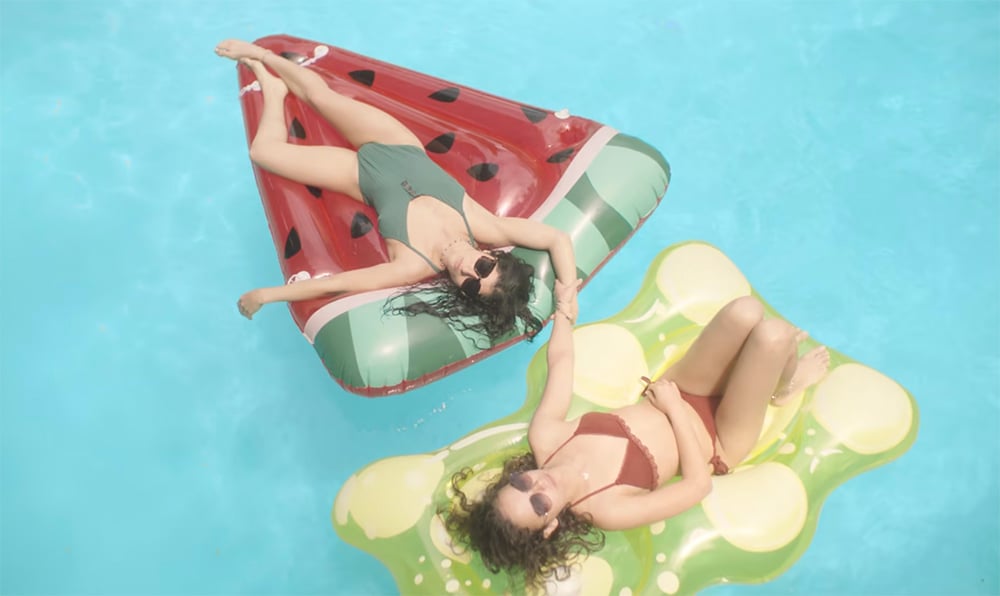
Amy Omar: We wanted to capture a very specific angle when the girls are in the pool talking to Mrs. S. She has an overbearing, looming presence and we were able to capture that by Mika Hawley shooting this from the pool.
Mika Hawley: The pool scene was the first scene we shot on day 1. So everyone was still getting their sea legs, so to speak. Based on constraints of the location, we could basically only look one direction at the pool- it happened to mean the girls needed to sit on the edge at the deep end. But we had some shots planned that involved me in the water with the camera.
The best way to accomplish this was putting a 12 step ladder into the pool, weighted down with a sandbag, that I could stand on to operate. We rented a t bag to keep the camera dry, but it’s not the most ergonomic rig for handheld operating in a pool! Some of my favorite shots of the movie are from this setup- the girls talking to Mrs. S while they float around. The way they floated into different blocking positions as the scene went on was really beautiful.
Soundstripe: The film has a great soundtrack that feels very authentic to the characters and where they’re coming from and what they’re trying to achieve, how did you find the right artist and bring this underscore to life?
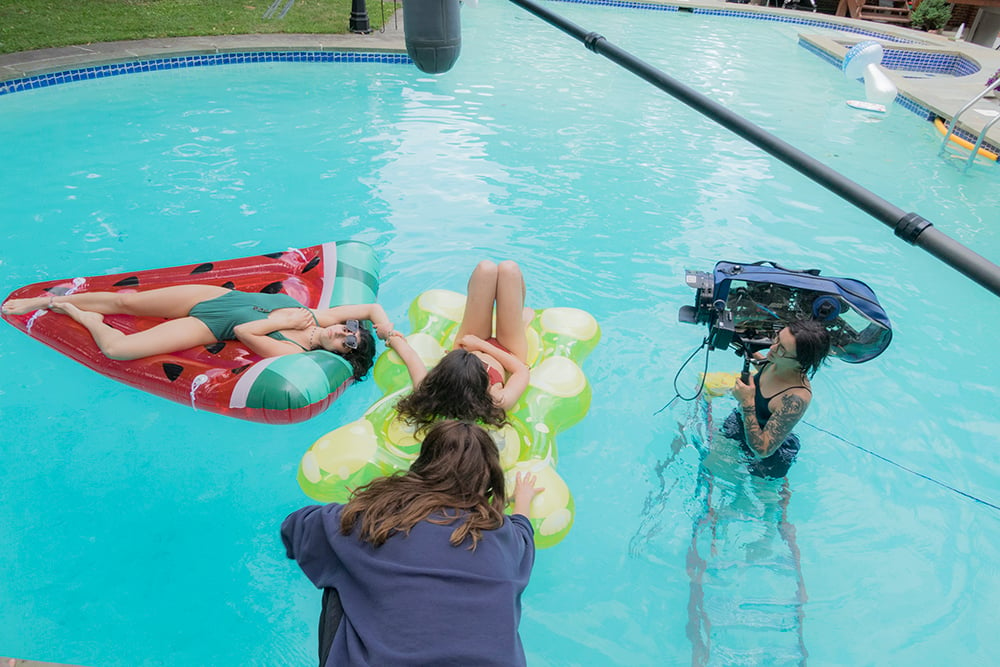
Image by Jonno Rattman.
Amy Omar: I would love to highlight our music, which is a really special part of this film and could make for an interesting piece in itself. While I was writing the script, I came across this band Altin Gün, a Turkish / Anatolian psychedelic rock band. What is so special about Altin Gün is that their songs are actually covers of very old traditional Turkish folk songs and they have recorded them to make them fun and modern. They even performed at Coachella in 2022. I licensed two of their songs because their music represented so much of what my film is about - Turkish-American teens trying to apply old practices to their modern life.
Soundstripe: Okay, we have to know about the feasting scene towards the end. What was the prep for the cast and crew for eating all of the different foods? How many takes did you ask them to go through?

Amy Omar: So this is actually an example of pure kismet in the filmmaking world. When I wrote the scene, I knew that I wanted it to play over "Yüce Dağ Başında" by Altin Gün and I had included a few filler activities like the dart throwing of the fries and arming linking while eating Crunch Wrap Supremes, but a majority of the food play was improv! This was our second to last shot that we filmed so we were running out of time and really only had time to shoot 1 or 2 takes. And that's exactly what we did - we shot this in two takes and I gave Güneş and Lucie free range to PLAY and be silly, just like teenage girls would be. Luckily, we had a spit bucket behind the bed so they didn't actually have to consume all of that junk food!
The prep was really fun because our production design team organized all of the food in a sort of shrine-like worship set up which made the scene even funnier to film. Before shooting we made a list of all of the classic American junk food that we wanted and we actually partnered with BEN (Branded Entertainment Group) who connected us with Frito Lay who provided all of the chips for free! Funny enough- at one point some of the candy was missing from the set, so we had a mystery snacker lurking around and had to run out and replace the candy before shooting.
Soundstripe: If you could give some advice to any up-and-coming filmmakers looking to premiere their films at SXSW one day, what would that be?
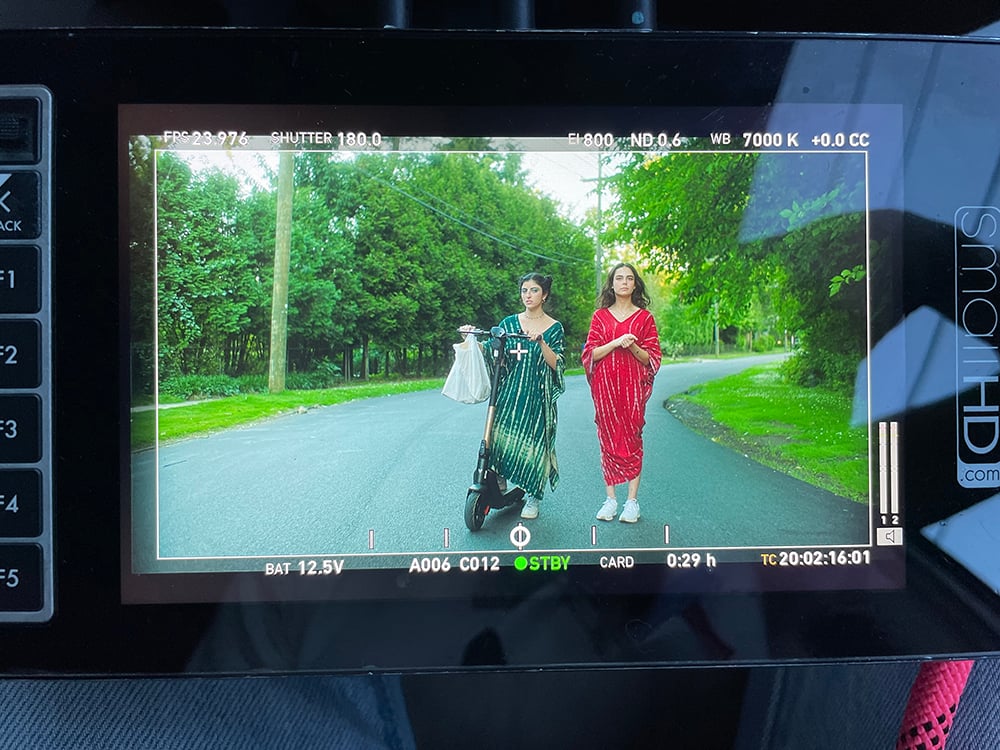
Amy Omar: Last year, I attended SXSW as a guest to support my friends' films that were premiering in the festival. I was struck by the supportive ecosystem of filmmakers and how the festival felt like a true celebration of artists, rather than an industry centric networking only event. This takes a certain pressure off the artists and allows for a really beautiful free flow of personalities. There is an ease during the festival that I haven't seen at other festivals and I believe that is due to the tone SXSW sets for its filmmakers.
Maybe it's Austin, maybe it's SXSW, but the festival is a celebration of the weird, funny, stranger than fiction stories and that is what makes it such a unique and important festival to me. The fact the films like Everything Everywhere All At Once premiered there last year is telling of the openness the selection has for his films. To filmmakers looking to screen at SXSW, I would advise them that authenticity matters and don't be afraid to take risks to tell your unique perspective.
For more filmmaking interviews and insights, be sure to stay tuned to the Soundstripe blog — and also check us out on YouTube!